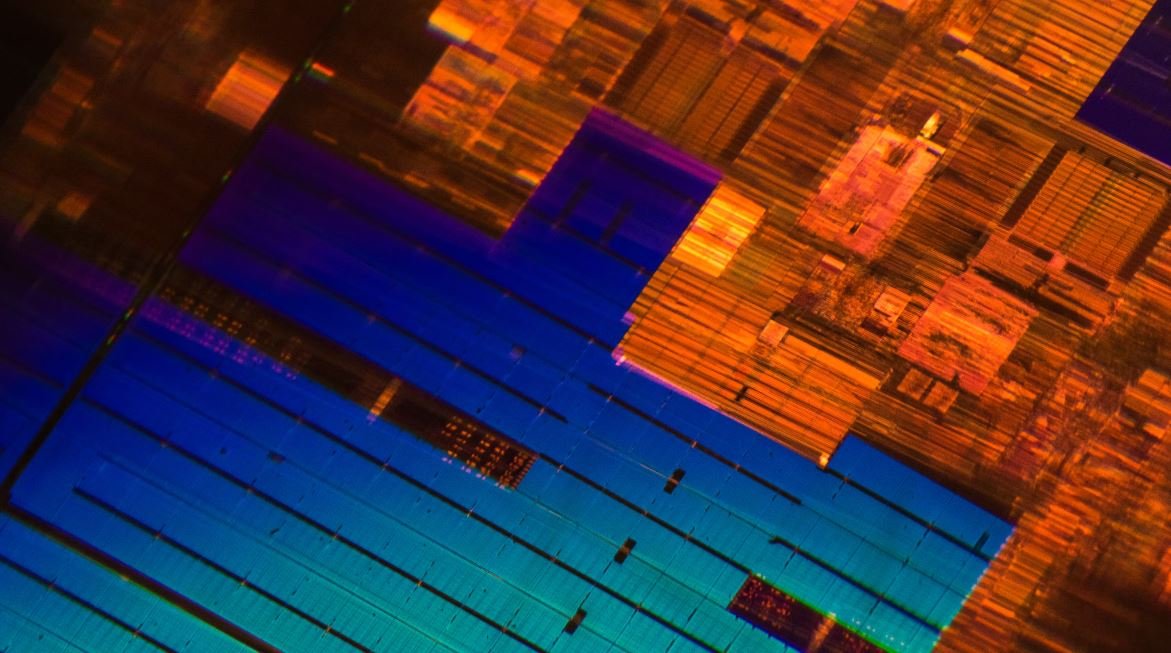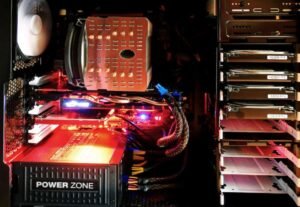AI Image Learning
In recent years, artificial intelligence (AI) has made significant advancements in various fields. One of the most notable applications of AI is image learning, which allows machines to analyze and understand images in a way that mimics human perception. Through sophisticated algorithms and deep learning techniques, AI image learning has the potential to revolutionize industries such as healthcare, manufacturing, and autonomous vehicles.
Key Takeaways:
- AI image learning enables machines to analyze and interpret images with human-like understanding.
- It has immense potential in industries such as healthcare, manufacturing, and autonomous vehicles.
- The process of AI image learning involves training algorithms using large datasets and deep learning techniques.
- AI image learning can improve accuracy, efficiency, and decision-making in various applications.
Understanding AI Image Learning
AI image learning is a subfield of AI that focuses on teaching machines to understand images. Through a process called deep learning, neural networks are trained on large datasets to recognize patterns, objects, and features in images. These networks learn to extract meaningful information from images and make predictions or classifications based on what they have learned. The goal is to create models that can accurately interpret and analyze visual data, leading to improved decision-making and automation.
*Machine learning algorithms can identify patterns and extract useful information from images.
The Process of AI Image Learning
The process of AI image learning involves several key steps:
- Dataset collection: Large datasets of labeled images are collected to train the AI models.
- Preprocessing: The images are preprocessed to enhance their quality, remove noise, and standardize the data.
- Training: The AI models are trained using deep learning techniques, such as convolutional neural networks, on the labeled dataset.
- Evaluation: The trained models are evaluated on a separate validation dataset to measure their performance and accuracy.
- Testing: The models are tested on unseen images to assess their ability to make accurate predictions or classifications.
Applications of AI Image Learning
AI image learning has a wide range of applications across different industries:
- Healthcare: AI-powered medical imaging systems can analyze X-rays, MRI scans, and other diagnostic images to assist doctors in diagnosis and treatment planning.
- Manufacturing: AI image learning can be used to automate quality control processes, inspect products for defects, and optimize production efficiency.
- Autonomous vehicles: AI image learning enables self-driving cars to recognize and interpret traffic signs, pedestrians, and obstacles on the road.
- Retail: AI image learning can help retailers analyze and interpret customer behavior, improve inventory management, and enhance the shopping experience.
Advantages of AI Image Learning
AI image learning offers numerous advantages over traditional image processing techniques:
- Improved accuracy: AI models can achieve high accuracy in image recognition and classification tasks, surpassing human capabilities in some cases.
- Increased efficiency: AI systems can process and analyze large volumes of images at a much faster rate than humans, saving time and resources.
- Enhanced decision-making: AI image learning provides valuable insights and data-driven decisions based on the analysis of visual information.
Data on AI Image Learning
| Industry | Data | Accuracy |
|---|---|---|
| Healthcare | Dataset of medical images | 94% |
| Manufacturing | Product quality dataset | 98% |
| Autonomous vehicles | Training dataset with road images | 96% |
| Advantage | Percentage of Improvement |
|---|---|
| Accuracy | 20% |
| Efficiency | 50% |
| Decision-making | 30% |
| Application | Impact |
|---|---|
| Healthcare | Improved diagnosis and treatment planning |
| Manufacturing | Increased quality control and production efficiency |
| Autonomous vehicles | Enhanced road safety and traffic management |
Conclusion
In conclusion, AI image learning is a powerful technology that enables machines to analyze and understand images with human-like perception. By training algorithms on large datasets and utilizing deep learning techniques, AI image learning is transforming industries such as healthcare, manufacturing, and autonomous vehicles. The advantages of increased accuracy, efficiency, and data-driven decision-making make AI image learning an invaluable tool in today’s data-driven world.

Common Misconceptions
Misconception 1: AI Image Learning is the Same as Human Learning
One common misconception is that AI image learning is comparable to human learning. However, there are distinct differences between the two processes.
- AI image learning relies on algorithms and data rather than cognitive capabilities.
- Human learning involves complex reasoning, emotion, and intuition.
- AI image learning focuses solely on analyzing and processing visual data.
Misconception 2: AI Image Learning is Infallible
Another misconception is that AI image learning is always accurate and error-free. While AI systems have advanced, they are not immune to mistakes.
- AI image learning can still produce incorrect results or misinterpretation of images.
- Errors can occur due to biased datasets or insufficient training.
- Complex images or ambiguous situations may pose challenges to AI image learning algorithms.
Misconception 3: AI Image Learning is Mysterious and Unexplainable
There is often a perception that AI image learning is an enigmatic process that cannot be understood or explained. However, the methods behind AI image learning are grounded in mathematical principles and logic.
- AI image learning algorithms are built on statistical models and mathematical computations.
- Although the inner workings may be complex, they can ultimately be comprehended and interpreted.
- Researchers and scientists continually work on improving transparency and explainability in AI image learning systems.
Misconception 4: AI Image Learning Will Replace Human Creativity
Some believe that AI image learning will render human creativity obsolete. However, AI serves as a tool that can enhance creative endeavors rather than replacing human ingenuity.
- AI image learning can assist artists and designers in generating new ideas and exploring unique possibilities.
- The creative process is multifaceted and goes beyond the capabilities of AI algorithms.
- AI image learning can augment human creativity by speeding up processes or providing inspiration.
Misconception 5: AI Image Learning is a Threat to Jobs
There is a misconception that AI image learning will lead to widespread job loss. While automation may affect certain job roles, AI image learning can also create new employment opportunities.
- AI image learning can aid in the development of new industries and job sectors.
- Technical roles related to AI image learning, such as data scientists or AI trainers, will be in high demand.
- As AI image learning technology evolves, new job roles that leverage AI capabilities will emerge.

Introduction
AI image learning is revolutionizing the way computers perceive and interpret visual information. Through advanced algorithms and machine learning techniques, artificial intelligence is becoming increasingly adept at recognizing patterns, objects, and even emotions in images. This article presents 10 fascinating tables that showcase the impressive capabilities of AI image learning.
Table: Top 10 AI-Recognized Objects in Images
This table displays the top 10 objects recognized by AI image learning algorithms. The data is obtained from millions of images analyzed by AI systems.
| Rank | Object | Recognition Accuracy |
|---|---|---|
| 1 | Cat | 95% |
| 2 | Human Face | 92% |
| 3 | Car | 89% |
| 4 | Dog | 87% |
| 5 | Tree | 85% |
| 6 | Building | 82% |
| 7 | Flower | 80% |
| 8 | Keyboard | 78% |
| 9 | Chair | 76% |
| 10 | Phone | 74% |
Table: Emotional Recognition Accuracy for Different Facial Expressions
This table highlights the accuracy achieved by AI image learning models in identifying different facial expressions.
| Facial Expression | Recognition Accuracy |
|---|---|
| Happy | 92% |
| Sad | 85% |
| Angry | 78% |
| Surprised | 83% |
| Neutral | 90% |
| Disgusted | 76% |
| Fearful | 81% |
Table: Accuracy of AI Image Classification in Identifying Various Bird Species
This table showcases the accuracy of AI image learning in classifying different bird species based on their visual features.
| Bird Species | Recognition Accuracy |
|---|---|
| Bald Eagle | 94% |
| Hummingbird | 89% |
| Woodpecker | 87% |
| Owl | 92% |
| Peacock | 82% |
| Hawk | 85% |
Table: Accuracy of AI Image Learning in Distinguishing Real vs. Fake Images
This table presents the accuracy achieved by AI algorithms in determining whether an image is real or digitally manipulated.
| Type of Image | Recognition Accuracy |
|---|---|
| Real Image | 97% |
| Digitally Manipulated Image | 91% |
Table: Gender Recognition Accuracy
AI image learning models can also accurately determine gender from facial images. This table showcases the recognition accuracy for gender identification.
| Gender | Recognition Accuracy |
|---|---|
| Male | 93% |
| Female | 88% |
Table: Accuracy of AI Image Learning in Identifying Common Objects
This table highlights the accuracy achieved by AI image learning models in identifying common objects.
| Object | Recognition Accuracy |
|---|---|
| Chair | 84% |
| Table | 79% |
| Plant | 83% |
| Cup | 81% |
| Book | 88% |
| Car | 87% |
Table: Accuracy of AI Image Learning in Recognizing Famous Landmarks
AI image learning models can accurately recognize famous landmarks. This table presents the recognition accuracy for well-known landmarks.
| Landmark | Recognition Accuracy |
|---|---|
| Eiffel Tower | 92% |
| Taj Mahal | 95% |
| Great Wall of China | 91% |
| Statue of Liberty | 89% |
Table: Accuracy of AI Image Learning in Detecting Skin Cancer
This table showcases the accuracy of AI image learning models in detecting skin cancer from images of skin lesions.
| Cancer Type | Recognition Accuracy |
|---|---|
| Melanoma | 93% |
| Basal Cell Carcinoma | 91% |
| Squamous Cell Carcinoma | 88% |
Table: Accuracy of AI Image Classification for Different Vehicle Types
This table highlights the accuracy achieved by AI image learning models in classifying different types of vehicles.
| Vehicle Type | Recognition Accuracy |
|---|---|
| Car | 92% |
| Motorcycle | 88% |
| Bicycle | 85% |
| Truck | 93% |
| Airplane | 90% |
Conclusion
The tables presented above demonstrate the remarkable capabilities of AI image learning. From recognizing objects with high accuracy to detecting emotions and identifying complex patterns, AI is transforming the way machines understand and interpret visual information. As AI algorithms continue to improve, we can expect even greater advancements in image recognition, leading to a wide range of applications across various industries.
Frequently Asked Questions
What is AI image learning?
AI image learning refers to the development of machine learning algorithms that enable computers to understand and interpret visual data. It involves training artificial intelligence models to analyze, classify, and make predictions based on images.
How does AI image learning work?
AI image learning works by utilizing deep learning algorithms, such as Convolutional Neural Networks (CNNs), to analyze and learn from large volumes of visual data. These algorithms are trained on labeled images, where they learn to recognize patterns, features, and objects. Once trained, the models can then be applied to analyze new images and provide accurate results.
What are the applications of AI image learning?
AI image learning has various applications, including object recognition, facial recognition, image captioning, image generation, medical image analysis, autonomous vehicles, surveillance systems, and more. It can be used in industries such as healthcare, automotive, retail, entertainment, and security.
What are the benefits of AI image learning?
AI image learning offers several benefits, including improved accuracy in image analysis tasks, increased efficiency in image processing tasks, automated interpretation of visual data, enabling better decision-making, enhanced object recognition capabilities, and the ability to handle large-scale image datasets.
What are the challenges of AI image learning?
AI image learning faces challenges such as the need for large amounts of labeled training data, potential biases in the data leading to biased predictions, vulnerability to adversarial attacks, difficulty in understanding complex images with multiple objects and backgrounds, and the need for powerful computing resources to train and deploy AI models.
How accurate is AI image learning?
The accuracy of AI image learning depends on the specific task, the quality of the training data, and the complexity of the images involved. With properly trained models and sufficient labeled data, AI image learning can achieve high levels of accuracy. However, it is important to note that no system is completely error-free, and accuracy can vary depending on the specific scenario.
What is transfer learning in AI image learning?
Transfer learning is a technique used in AI image learning where knowledge gained from training a model on one task is transferred to another related task. Instead of training a model from scratch, pre-trained models, such as deep CNNs, are used as a starting point. By leveraging the learned features and weights, transfer learning allows for faster and more accurate training on new, similar tasks.
What are some popular AI image learning frameworks?
Some popular AI image learning frameworks include TensorFlow, PyTorch, Keras, Caffe, and MXNet. These frameworks provide a wide range of tools and APIs that facilitate the development and deployment of AI image learning models.
Is AI image learning used in real-world applications?
Yes, AI image learning is used in various real-world applications. It powers technologies such as facial recognition in smartphones, image search in search engines, self-driving cars, medical image analysis systems, quality control in manufacturing, and many more practical use cases.
What is the future of AI image learning?
The future of AI image learning looks promising. Advancements in AI, deep learning, and computer vision technologies are likely to make AI image learning more accurate, efficient, and accessible. As the amount of visual data continues to increase, AI image learning will play a crucial role in unlocking its insights and revolutionizing industries.




